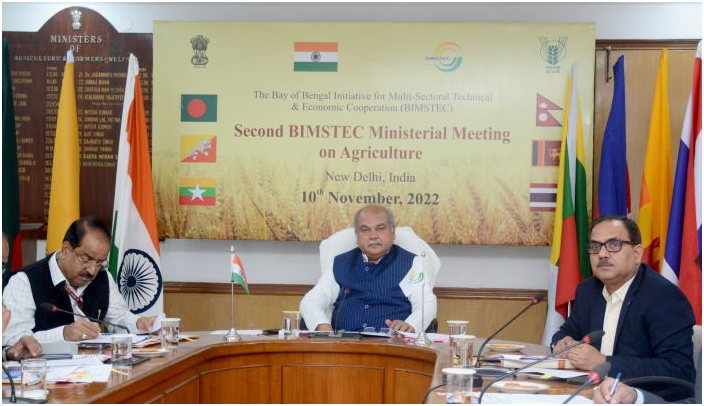Covid virus infection changes functioning of host cell RNA, say scientists (GS Paper 3, Science and Tech)

Why in news?
- For the first time, scientists have shown that infection by Covid virus changes the functioning of host cell RNA.
(RTMagzine.Com)
Basis of research:
- Researchers at Federal University of Sao Paulo (UNIFESP) in Brazil arrived at this conclusion by analyzing 13 datasets obtained during four studies of viral, human and animal cell RNA.
- The study examined the epitranscriptome of Vero cells (derived from monkeys) and human Calu-3 cells by direct RNA sequencing.
- An epitranscriptome is the collection of biochemical modifications of cell RNA, such as methylation.
- Methylation has two functions in viruses. It regulates protein expression, and it defends the virus against the action of interferon, a potent antiviral substance produced by the host organism.
Way Forward:
- The findings provided clues as to how different variants can escape the immune system, and serve as a basis for the development of novel treatments.
When Earth suddenly lost oxygen and the first mass extinction event happened
(GS Paper 3, Science and Tech)
Why in news?
- Recently, Geologists have traced the cause of the first known mass extinction event on Earth that caused the loss of a majority of animals.
Details:
- The mass extinction event happened near the end of the Ediacaran Period some 550 million years ago and geologists have revealed that it was due to a major decrease in global oxygen availability.
- The extinction event included the loss of many different types of animals, however, those whose body plans and behaviors indicate that they relied on significant amounts of oxygen seem to have been hit particularly hard.
- The mass extinctions are well recognised as significant steps in the evolutionary trajectory of life on this planet.
Mass Extinction:
- Researchers studied fossil imprints in rocks to understand how the creatures that perished in this extinction event would have looked.
- They said that before this extinction the fossils they find don't often fit into the ways animals are classified today.
- The researchers demonstrated that environmental changes, such as global warming and deoxygenation events, can lead to massive extinction of animals and profound disruption and reorganization of the ecosystem.

(India Today)
Why did Earth lose Oxygen?
Earth has gone through five major mass extinction events that include:
- Ordovician-Silurian Extinction (440 million years ago),
- The late Devonian Extinction (370 million years ago),
- The Permian-Triassic Extinction (250 million years ago),
- The Triassic-Jurassic Extinction (200 million years ago), and
- The Cretaceous-Paleogene Extinction (65 million years ago).
Way Forward:
- The study shows that, as with all other mass extinctions in Earth's past, this new, first mass extinction of animals was caused by major climate change, another in a long list of cautionary tales demonstrating the dangers of current climate crisis for animal life.
India hosted the 2nd BIMSTEC Agriculture Ministers meeting
(GS Paper 2, International Organisation)
Why in news?
- Recently, India hosted the Second Agriculture Ministerial-level meeting of the Bay of Bengal Initiative for Multi-Sectoral Technical and Economic Cooperation (BIMSTEC) under the chairmanship of the Union Minister for Agriculture and Farmers Welfare.
- Agriculture ministers of Bhutan, Bangladesh, Nepal, Myanmar, Sri Lanka and Thailand participated in the meeting.

(Agriculturepost.com)
Key Highlights:
- The 2nd BIMSTEC Agriculture Ministerial Meeting adopted the Action Plan for Strengthening BIMSTEC Agricultural Cooperation (2023-2027).
- An MoU between the BIMSTEC Secretariat and the International Food Policy Research Institute (IFPRI) has been signed and approval has been given to bring Fisheries and Livestock sub-sectors under the Agricultural Working Group.
India’s address at meet:
- India urged the member countries to cooperate in developing a comprehensive regional strategy to strengthen cooperation for the transformation of agriculture.
- India asked participating countries to actively participate in India's initiative to promote millet as a food.
- India emphasized the importance of cooperation in agriculture and allied sectors to ensure food security, nutrition, environmental sustainability and livelihood support, for which it is required to increase technical and economic cooperation to deal with the challenges of climate change, agro-biodiversity, microbial preventive resistance under the 'One Health' approach and other programmes.
India’s first national repository for life science data-‘Indian Biological Data Center’ (IBDC)
(GS Paper 3, Science and Tech)
Why in news?
- Recently, the Ministry of Science and Technology dedicated to the nation India’s first national repository for life science data-‘Indian Biological Data Center’ (IBDC) at Faridabad, Haryana.
Scope:
- As per the BIOTECH-PRIDE guidelines of the Government of India, IBDC is mandated to archive all life science data generated from publicly-funded research in India.
- Supported by the Department of Biotechnology (DBT), it has been established at Regional Centre of Biotechnology (RCB), Faridabad with a data ‘Disaster Recovery’ site at National Informatics Centre (NIC), Bhubaneshwar.
Key Highlights:
- It has a data storage capacity of about 4 petabytes and houses the ‘Brahm’ High Performance Computing (HPC) facility.
- The computational infrastructure at IBDC is also made available for researchers interested in performing computational-intensive analysis.
- IBDC has started nucleotide data submission services via two data portals viz. the ‘Indian Nucleotide Data Archive (INDA)’ and ‘Indian Nucleotide Data Archive - Controlled Access (INDA-CA)’ and has accumulated over 200 billion bases from 2,08,055 submissions from more than 50 research labs across India.
.png)
(Jagranjosh.com)
Way Forward:
- Fundamentally, IBDC is committed to the spirit of data sharing as per FAIR (Findable, Accessible, Interoperable, and Reusable) principles.
- IBDC is being developed in a modular fashion wherein different sections would typically deal with particular type/s of life science data.





.png)